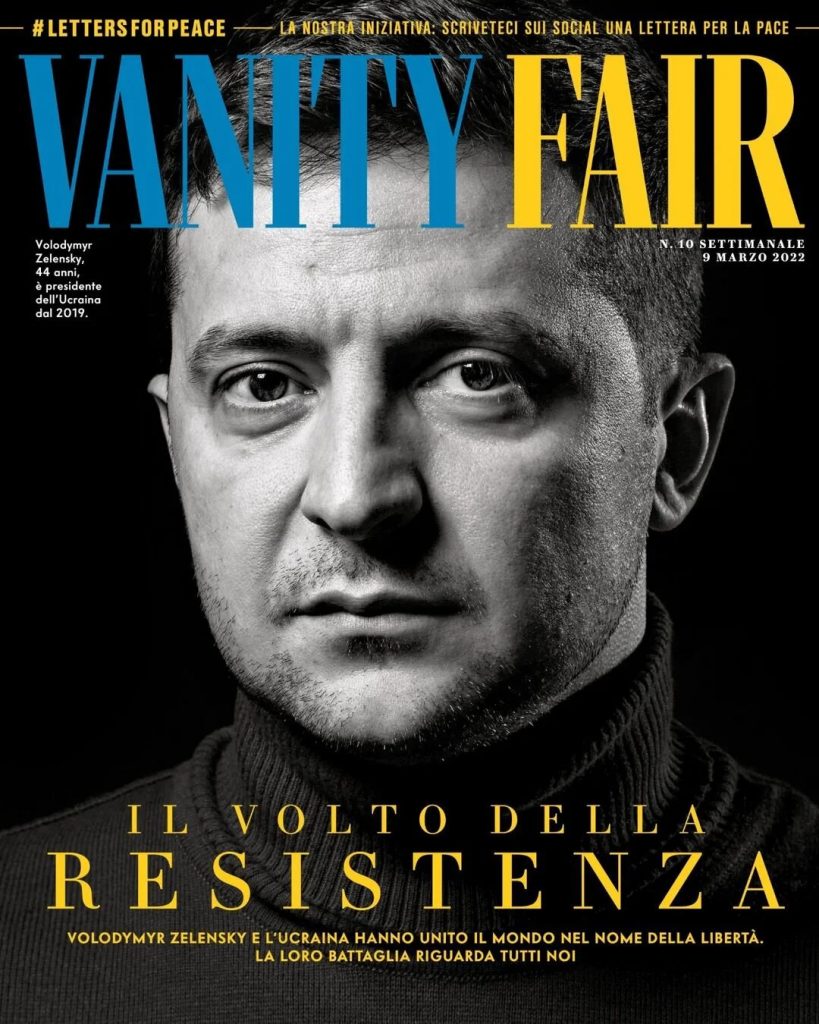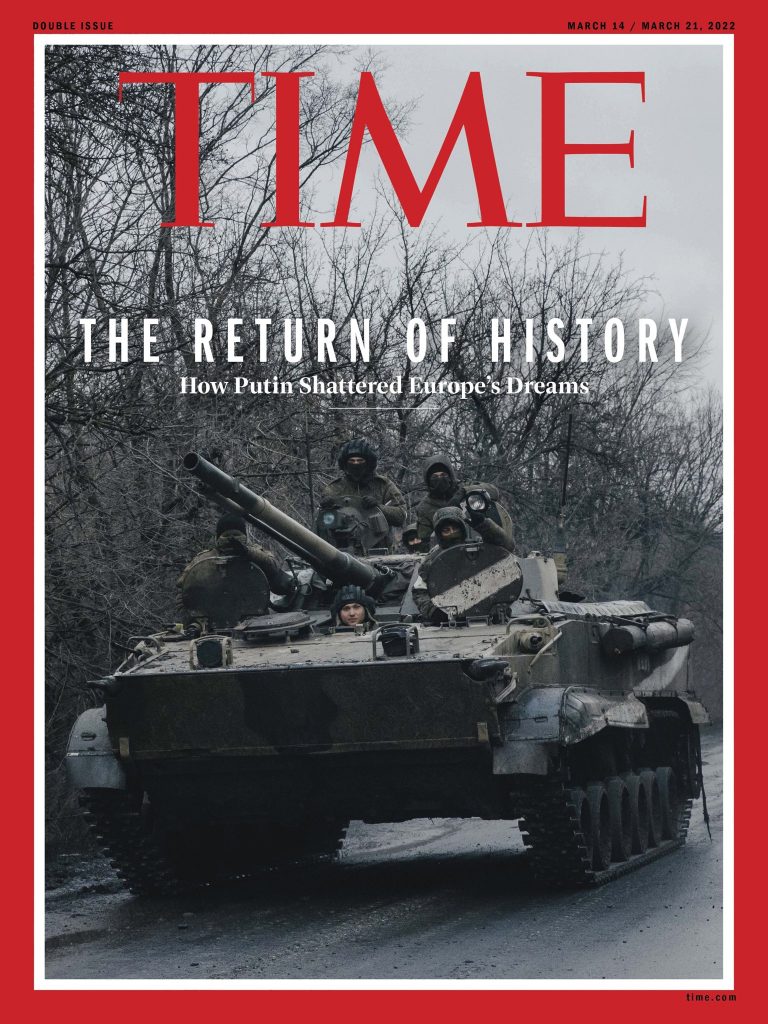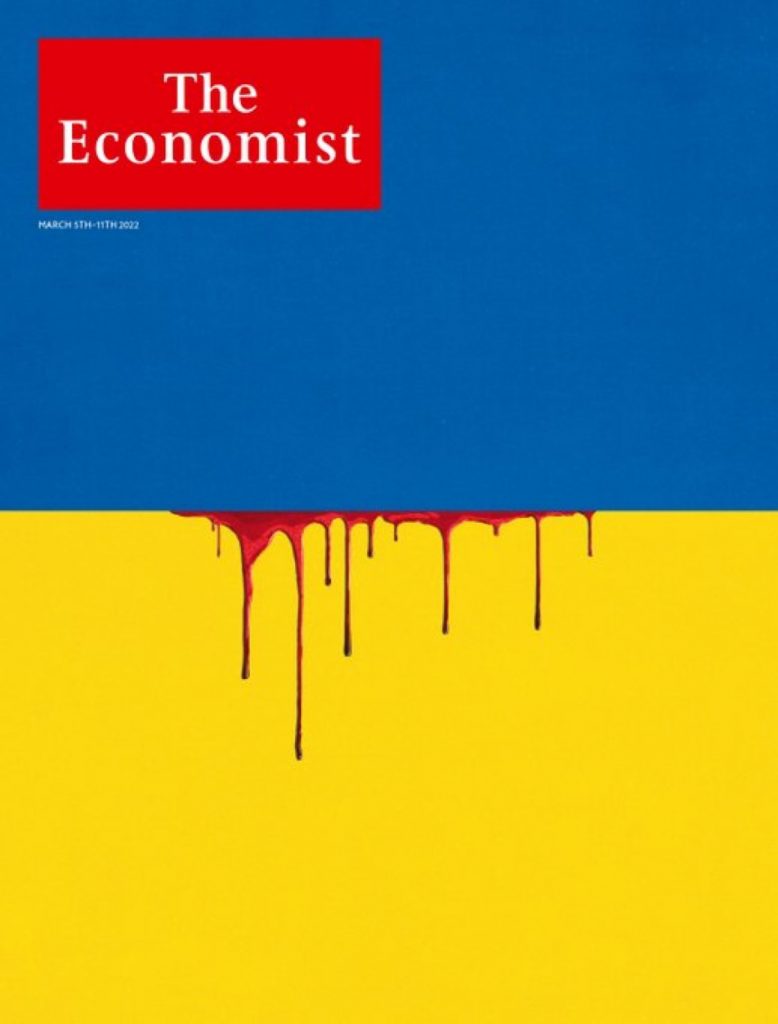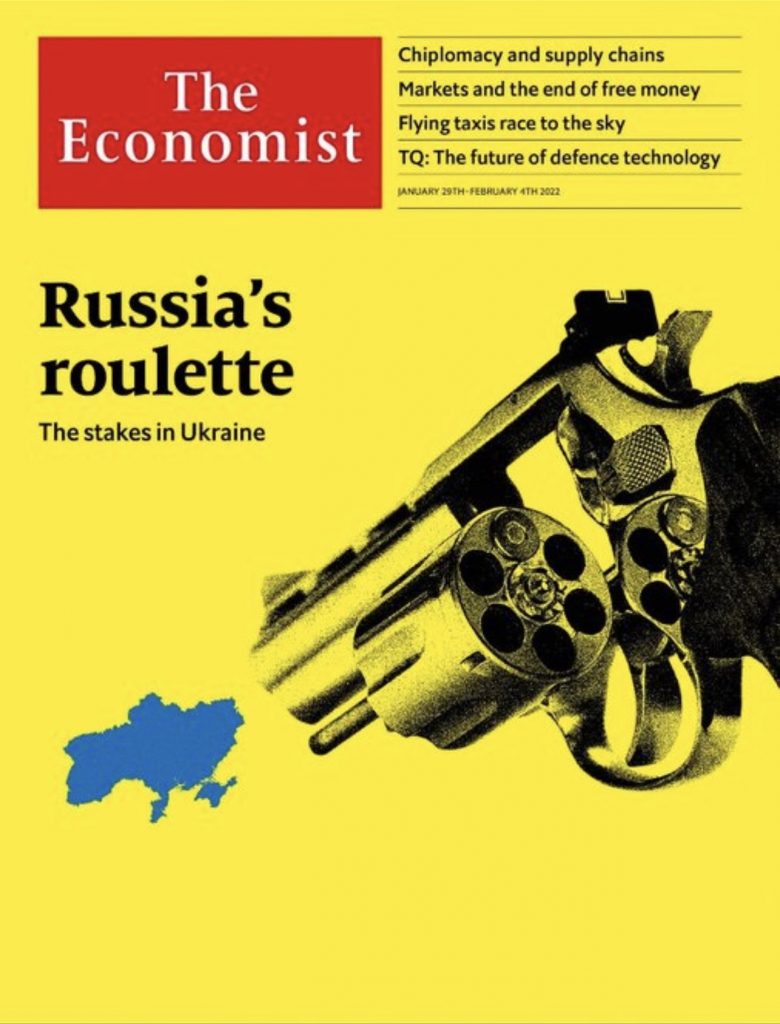Ever since Russia invaded Ukraine in February 2022, it feels as though we’ve been launched into the past. Although the war has been ongoing for many years Putin’s decision to attack has thrown the lives of many into chaos. In one of their recent covers, TIME magazine calls it “the return of history,” and we’d have to agree. With places like maternity wards being bombed, it’s hard to have hope during these times.
As these tragic events have been occurring in Eastern Europe, the coverage has been dominating the major media outlets around the world. Magazines and newspapers aren’t to make a statement — they’ve been responding with powerful imagery in their pages and on their magazine covers, and we don’t think that’s ending anytime soon. Here are the biggest media reactions in the world to Russia’s war against Ukraine.
1. Vanity Fair Italy, 2022
Vanity Fair Italy released their March issue with a serious black and white image of Ukrainian president Volodymyr Zelenskyy, and the subtitle “The Face of the Resistance” beneath. It’s a sign of how the president has galvanized the entire world to help fight back against attacks like this.

2. The New Yorker, 2022
The March cover of the New Yorker shows a cartoon illustration of the Ukrainian president surrounded by smoke and rubble, defiantly standing in the middle of it all and proudly holding up his country’s flag. It’s a symbol of his refusal to run away from his nation in times of turmoil.

3. TIME Magazine, 2022
In TIME magazine’s latest cover, they depict tanks with soldiers in it, and the caption “the Return of History: How Putin Shattered Europe’s Dreams.” It’s one of the most powerful imagery and caption pairings, showing how much we are truly haunted by history, and how it, unfortunately, tends to repeat itself.

4. The Economist, 2022
The Economist recently featured an all-red cover and boldly dubbed their recent issue “The Stalinization of Russia” with the letter Z being replaced by a powerful image of a soldier in the midst of warfare.

5. The Economist, 2022
Another Economist cover doesn’t give Russia too much attention. Instead, they put the spotlight on Ukraine and making the entire cover the colors of their flag. Between the blue and the yellow, there’s an ominous streak of blood dripping down, showing how war has sullied the nation in these recent years.

6. TIME Magazine, 2022
The front page of TIME also showed a painted portrayal of Ukraine’s flag in paint streaks, with a quote from Volodymyr Zelenskyy being featured on top of it. The quote is from a speech he made in the European Parliament on March 1, saying, “Life will win over death, and the light will win over darkness.”

7. The Economist, 2022
Just weeks before the invasion, The Economist posted a foreshadowing image of a gun pointed at the country of Ukraine, titled “Russia’s Roulette: The Stakes in Ukraine.”

8. The Economist, 2022
This picture provides a metaphor, showing Putin painting himself in a corner with a red paintbrush and showing how he’s alienated himself from much of the world. Calling it “Putin’s botched job”, the media outlet says that he has “miscalculated.”

9. Newsweek, 2022
Here, we see a focus not on the leader of either country, but on the refugees that have been displaced and forced to flee. The image portrays both human connection and chaos in times of war, showing families huddled together in the cold with their suitcases. With big, black letters reading “Crisis,” the cover asks a question many of us are asking: ”As many as 4 million refugees will flee Ukraine in coming months. Can Europe handle the strain?”

10. Newsweek, 2014
Although these magazine covers are from recent times, this theme is not new to the media. This Newsweek cover is all the way back from the beginning of the Russia-Ukraine war in 2014. Over the past decade, not too much has changed in the media’s villainous portrayal of Putin, and we can’t blame them. They show him with sunglasses on, and the reflection of an explosion in his eyes, with the title “Inside the Bullet-Proof Bubble of the West’s Public Enemy Number One Pariah.”